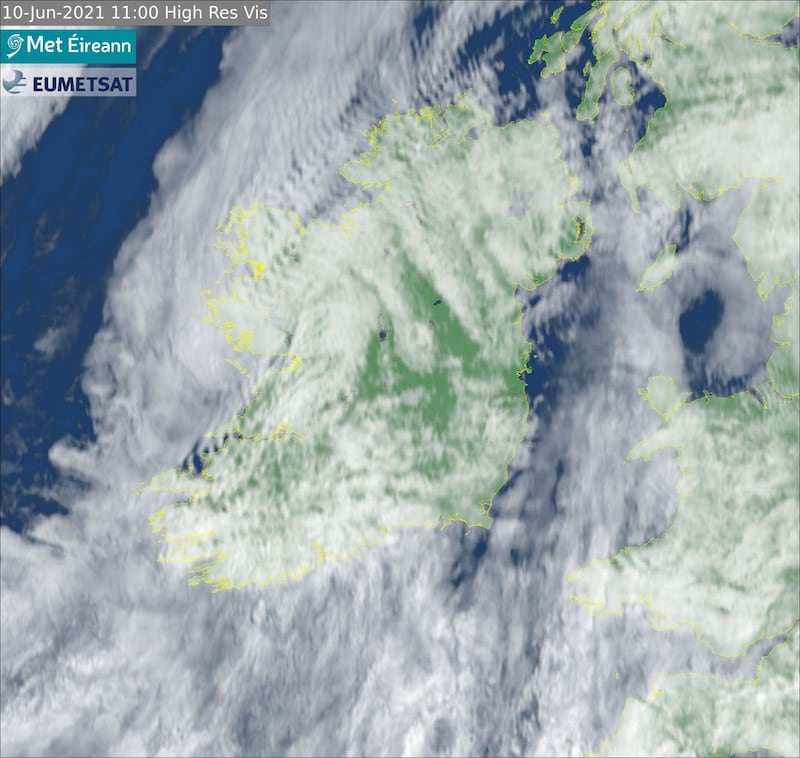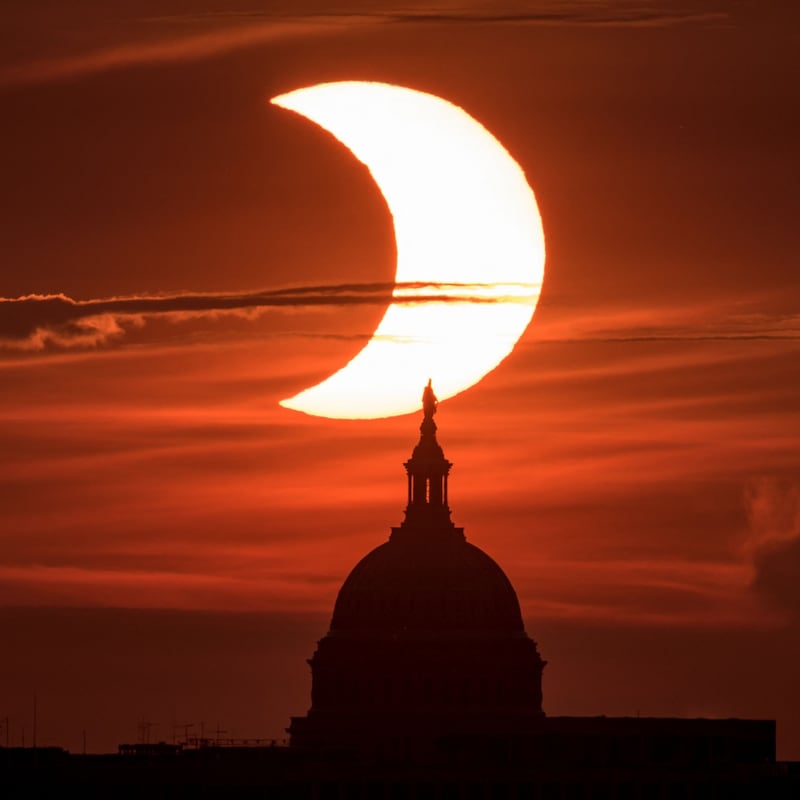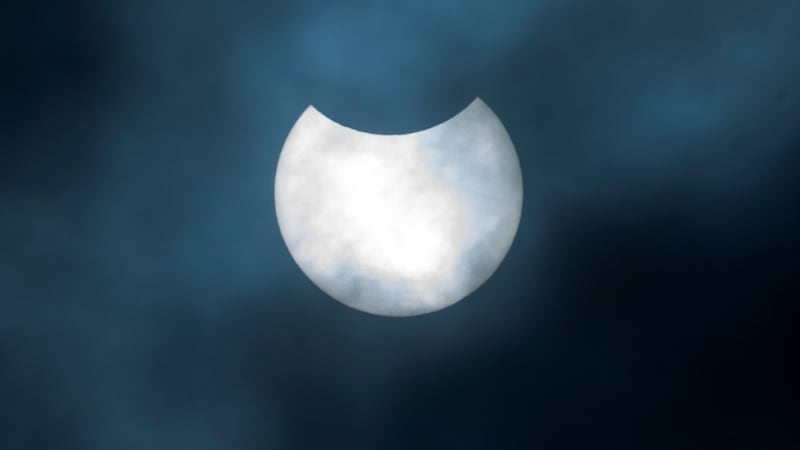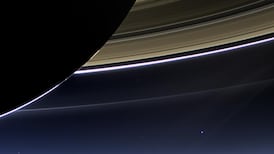Most parts of Ireland enjoyed sufficiently cloud-free skies on Thursday morning to take in the country's first solar eclipse in four years.
According to Astronomy Ireland, which was “flooded” with amateur pictures, the 2½-hour partial eclipse was stretched out long enough to allow most people a glimpse of at least some of its stages.
It was not quite as spectacular as a total eclipse, the type that according to AI's David Moore sees "birds go to sleep, cattle lie down in the field" in the middle of the day, but the solar/lunar events are of enough interest to draw thousands of eyes skyward.
“We had a great eclipse,” he said shortly after the heavens had resumed normal services. “We got to see all of the phases of it. It might have been cloudy for a while but then it would break.”

Met Éireann satellite imagery from 11am, almost halfway through the event that began at 10am, showed a scattering of cloud cover but porous enough not to ruin the party.
“It’s what I always say: never believe the weather forecast,” Mr Moore said. “But to be fair to Met Éireann, cloud cover is very difficult to predict. There were huge clear patches in some parts of Ireland.”
Eclipses occur when the sun, moon and Earth align for a brief period, casting some degree of shadow across parts of the planet. The last one in Ireland was in 2017 but the last total eclipse here was in 1724. Anyone hoping to see that kind of celestial extravaganza will have to live to September 2090 and even then it will only be visible from a small corner of the southwest.
Thursday's event was at its most pronounced on a path beginning in Canada and travelling across Greenland, close to the North Pole and down into eastern Europe. Even in these areas, however, a "ring of fire" – a small visible rim of the sun – prevented it from being a total eclipse.
Anyone who missed Thursday’s alignment will not have to wait long for another chance. A partial eclipse is due in October, 2022, but is not expected to be quite as impressive. A further event in 2025, however, should offer a superior spectacle, based on how much of the sun’s diameter is visibly covered.

Parts of the US, Canada, Europe and Asia witnessed an annular eclipse – where the sun appeared in the sky as a very bright ring, or annulus, in a phenomenon dubbed the "ring of fire".
Brandon Berkoff (15) who watched the eclipse from a beach on Long Island, New York, described the event as "beautiful", saying: "This was the first solar eclipse that I've ever seen and it definitely lived up to my expectations."
He told PA: “I woke up at about 5am and got there right as the sun got above the horizon.
“Once I got my telescope set up and ready it was super-enjoyable to watch it pass through the clouds and take pictures.”
Observers in the UK and Ireland saw a crescent sun instead of a ring, as this was a partial eclipse.

Robert Simpson (39) from Milton Keynes, told the PA news agency: "I love how they [events such as the solar eclipse] make you see the moon and sun in a different way.
“I saw the UK partial eclipse in 2015, and a total eclipse in the US in 2017. So they are rare, but I catch them if I can.”
Paul Galletly (48) from London, said that clear skies and a higher location allowed him to take good photos of the spectacle.
He said: “Outside my third-floor flat, I stood on the walkway, looked up and glimpsed the eclipse first on my mobile and then tried my luck with the Canon camera and got the shot I wanted.”
Natalie Ingate, from Chislehurst in southeast London, said she was able to see the eclipse through the cloudy skies.
She told PA: “For me, it felt like a lovely connection, sharing this experience with many people I don’t know – but who share a similar curiosity, to experience this partial eclipse.”
AI has asked anyone with images of Thursday’s eclipse to forward them to magazine@astronomyireland.ie. – Additional reporting: PA










